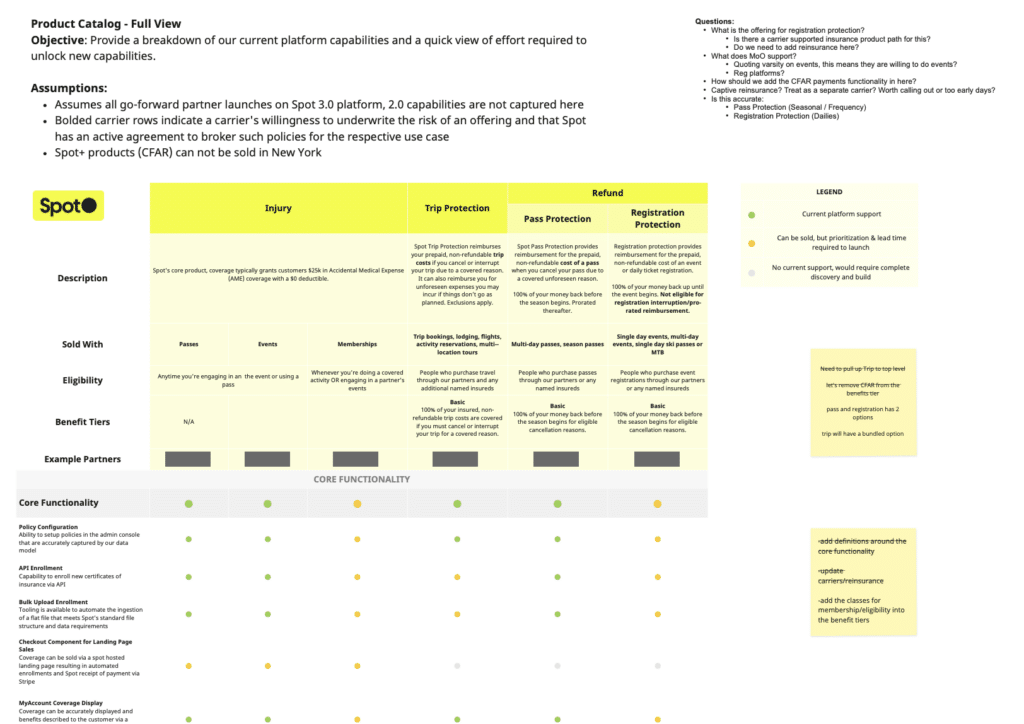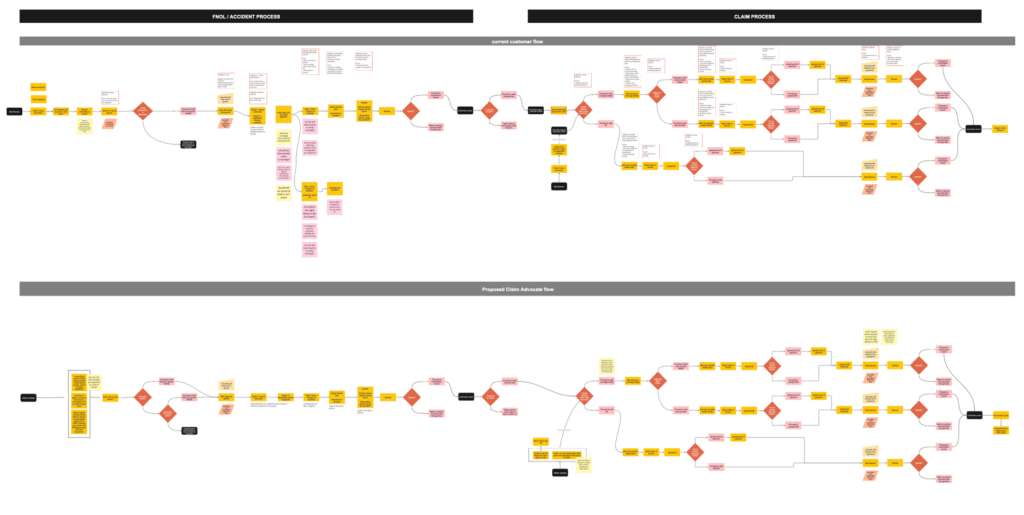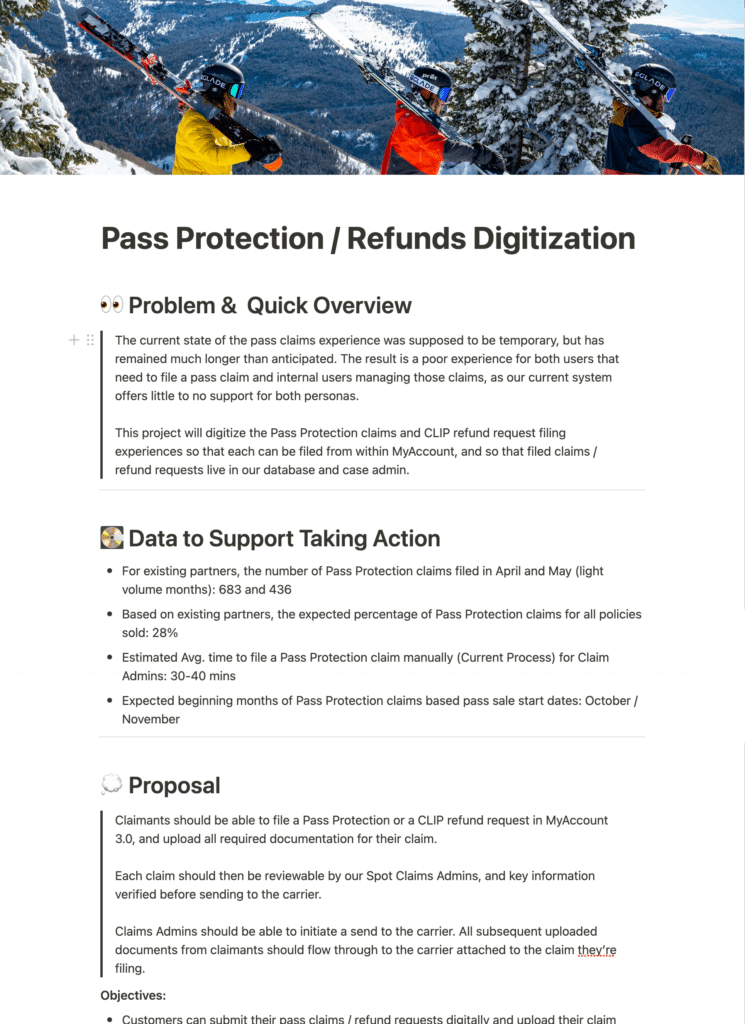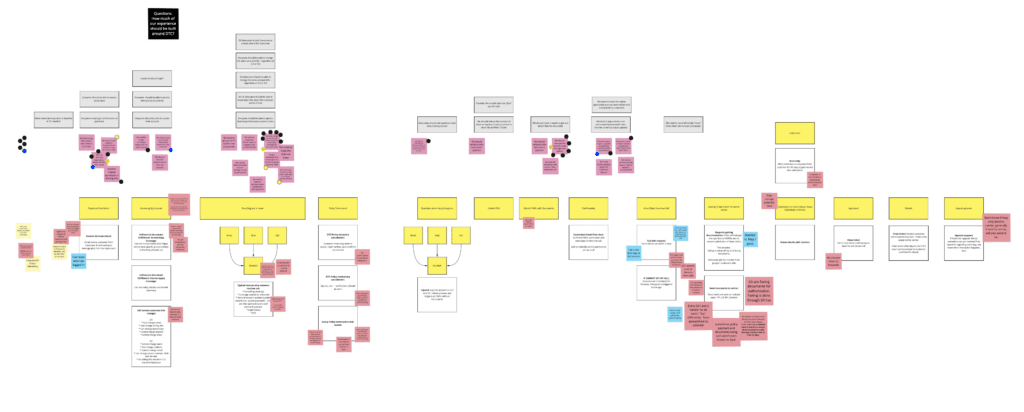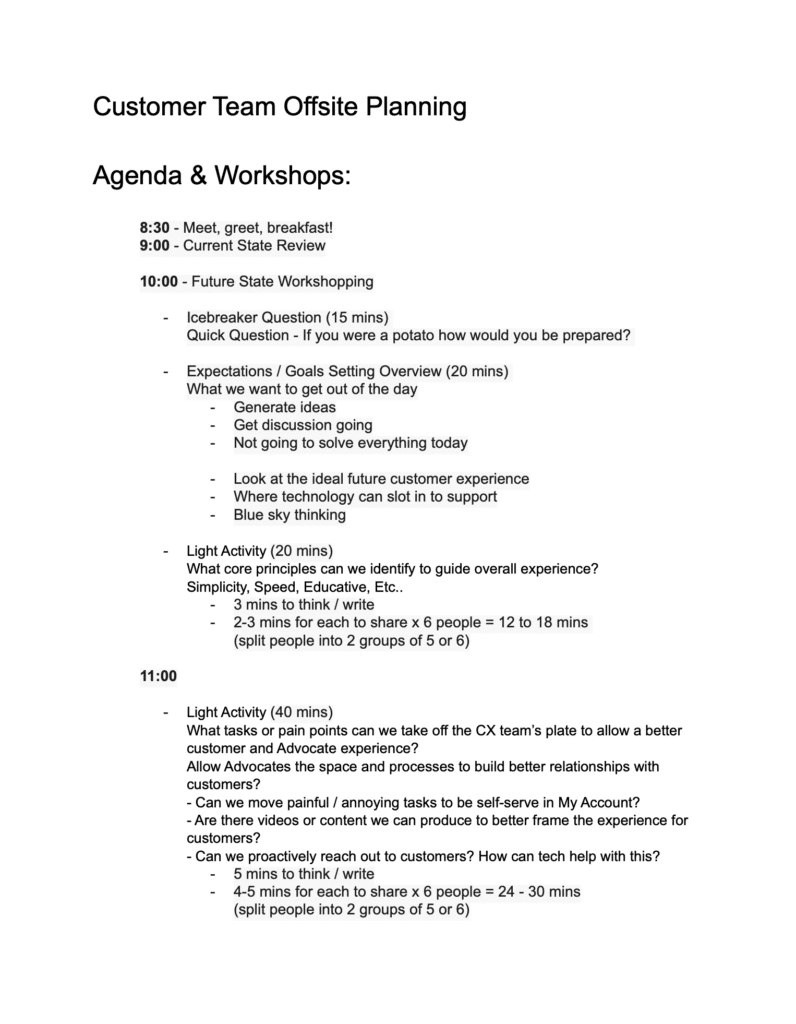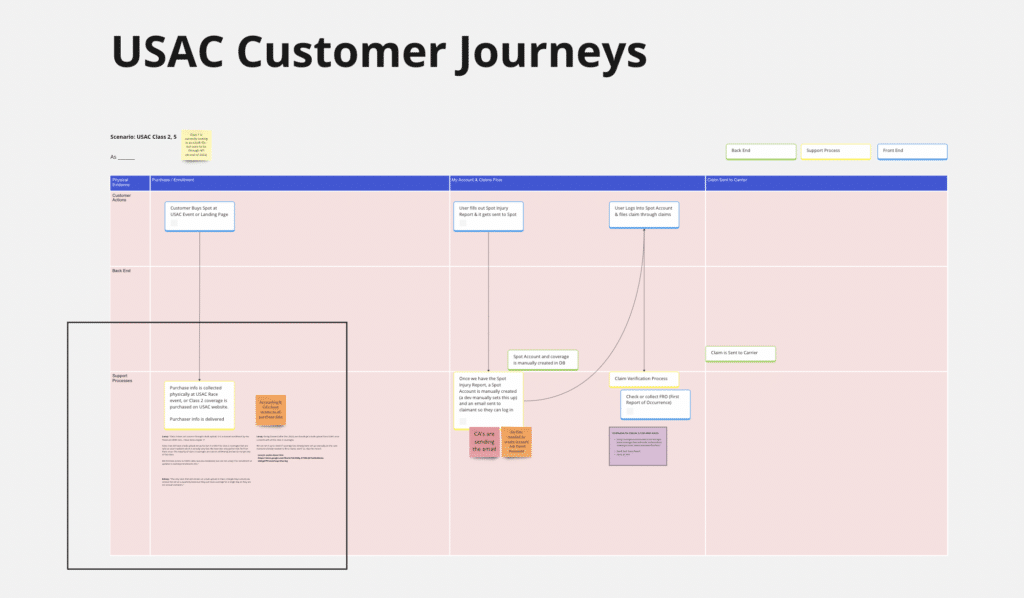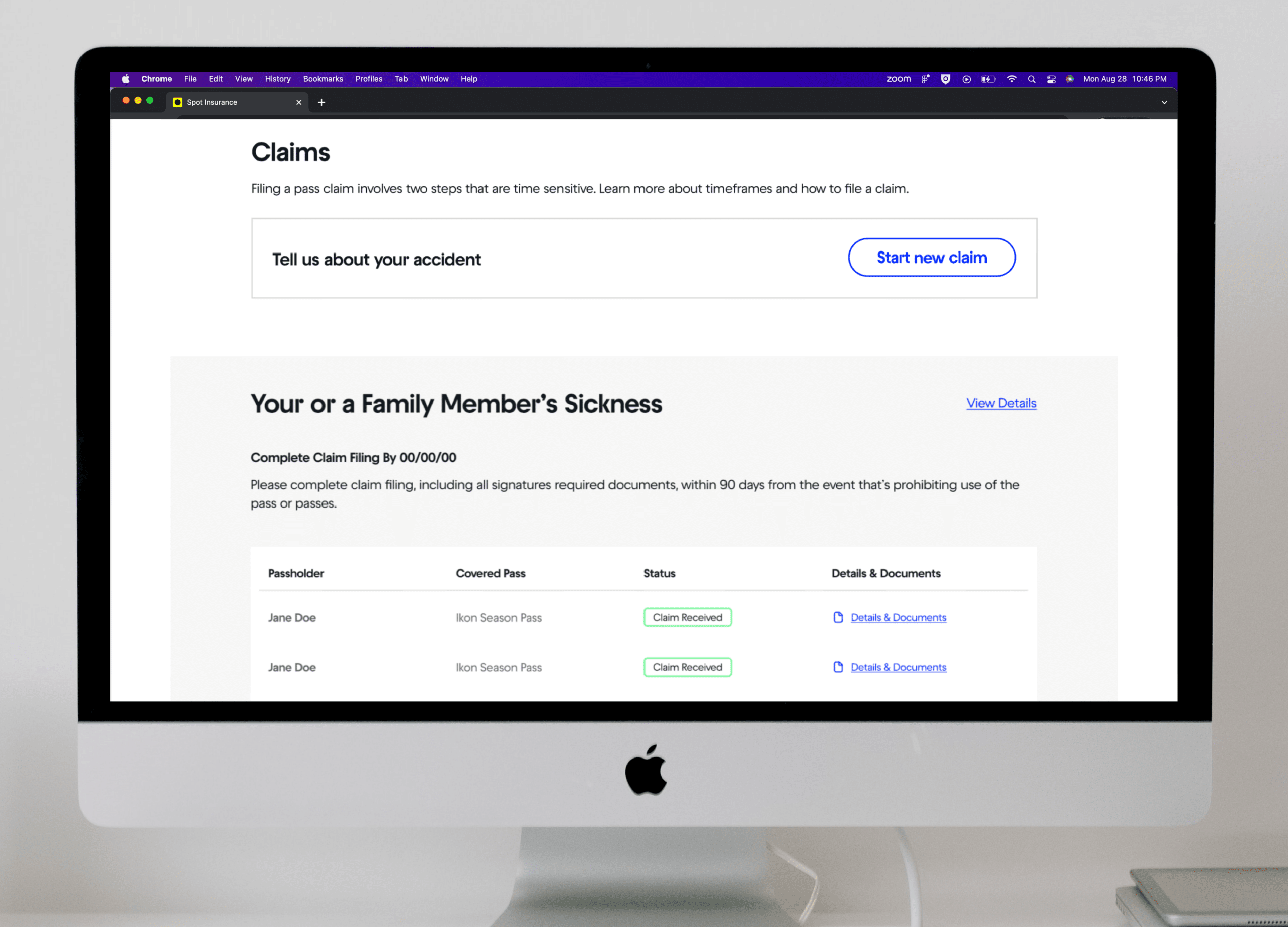
OVERVIEW OF MY ROLE
As the only Sr. Product & UX Designer for Spot, I produced and maintained designs for all customer facing and internal platforms across the company.
I also led a small team of designers day-to-day (de-facto) by looking out for the UX team timelines, team workload and tasks, and oversaw UX outcomes.
RESPONSIBILITIES OF MY ROLE
Maintaining The Spot Design System
& Institutional Knowledge
- Maintaining the Spot Design System
- Documentation of company systems & the requirements that shaped them
Product Design & UX Work:
- Project planning
- Stakeholder involvement & communications planning
- Discovery / Requirements & Data review
- Design & Iteration
- Engineering collaboration & supporting the build processes
- Usability Testing & analyzing post launch
Forward Looking Planning & Integrating UX into Company Culture
- Supporting project pitch writing. Collaborating with PMs to shape future project pitches
- Documenting user journeys and process reviews with different teams at the company to uncover upgrade areas and pitch ideas.
- Facilitating cross-department syncs
- Keeping an eye on the sales pipeline and company strategy roadmap to know what kinds of projects will be coming next
UX Team Management:
- Looking out for the UX team timelines, team workload and tasks, and overseeing UX outcomes
KIND WORDS
(TESTIMONIALS FROM THE TEAM)
Reflections & Learnings
A few reflections and learnings from my time at Spot Insurance.
Testimonials From The Team & Company
I’m a big believer that good collaboration is key to great project outcomes (and to having a great work experience). Recorded here are a few kind words from teammates, colleagues, and stakeholders I’ve had the good fortune to work with.
Product Design & UX Work
PRODUCT DESIGN
& UX PROJECTS
The core of my role was in leading and working on UX projects at Spot.
In my role I was responsible for shaping and planning upcoming product design projects, and then working through the UX process to deliver final designs that would be implemented by the engineers.
Some of the steps I would outline and follow in the UX design process are:
Project Planning
- Stakeholder involvement & communications planning
- Timeline planning
Discovery
- Scenario Mapping, User Story Mapping, and requirements reviews
- Materials and data reviews
Design
- Information Architecture and User Journeys
- Wireframing and prototyping
- Copywriting and reviews
Engineering Collaboration, and Supporting the Build
- Collaborating with Engineering and participating in some rituals
- Doing product review on Jira tickets related to the UX design
- Prepping internal teams for roll out when needed
Usability Testing & Analyzing Post Launch
- Usability Testing and making adjustments
- Defining metrics and analytics to track over time
View the
Spot Pass Protection Claims
Case Study
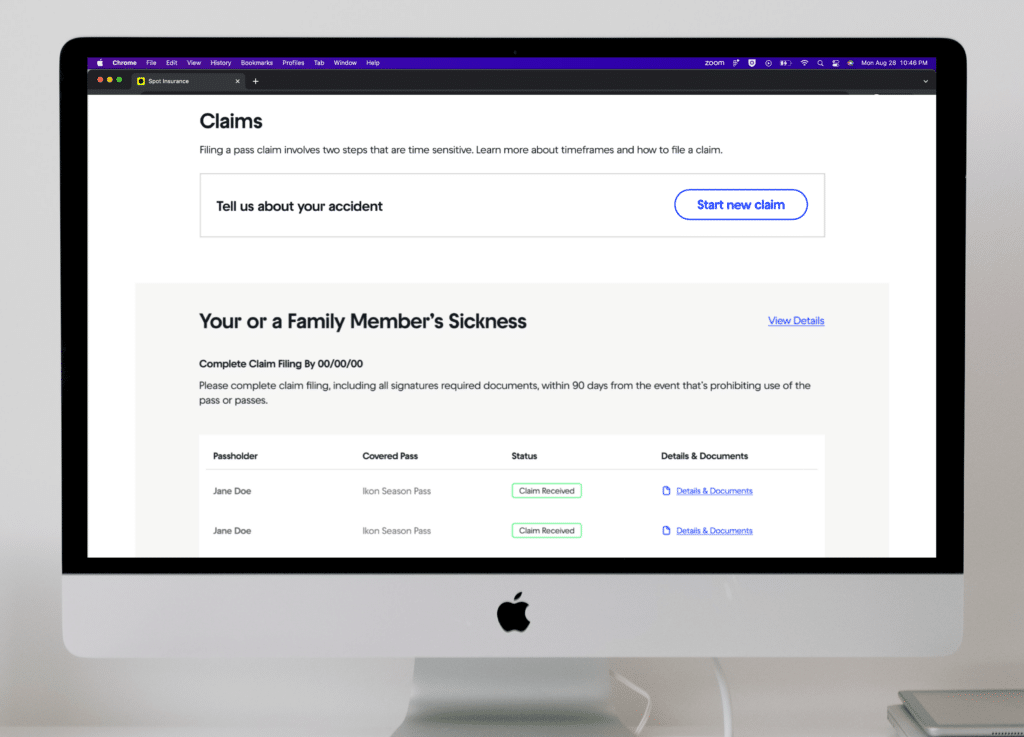
PROJECT PLANNING, STAKEHOLDER INVOLVEMENT & COMMUNICATIONS PLANNING
New projects would often start with a deadline driven by a business need. From here, we would plan out the project, allocating time for kickoff, discovery, engineering set up, and then typically we would work in two week sprints once we got into the design phase.
With so many teams and stakeholders interacting with the platform, and with insurance being such a regulated field, it was often important to identify who all the stakeholders were, and what the appropriate amount of decision making power each stakeholder should have. We sometimes used the RAPID framework for projects that had many stakeholders.
Throughout projects, we would hold check ins or share outs with different stakeholders, and reviews when feedback was required.
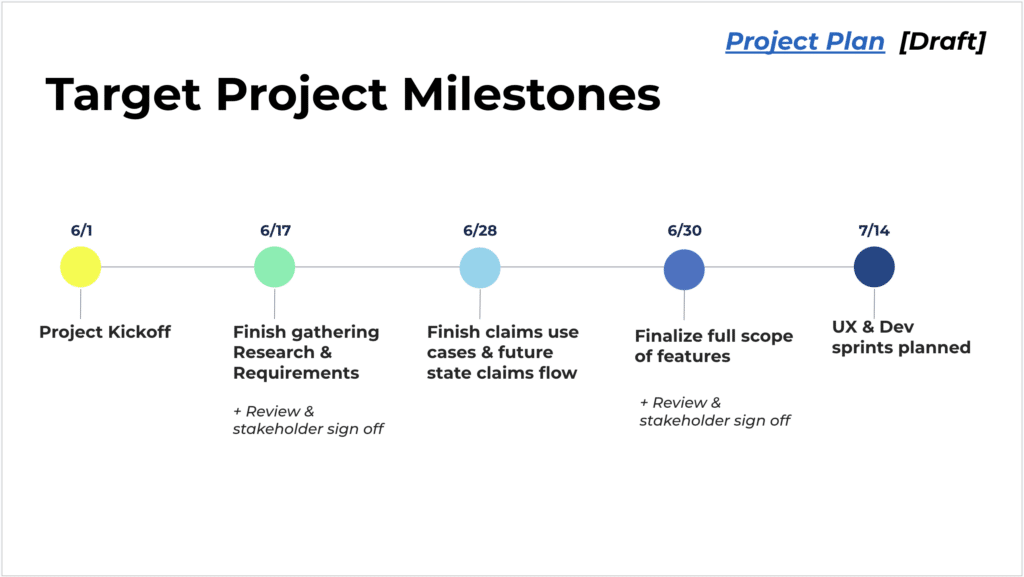
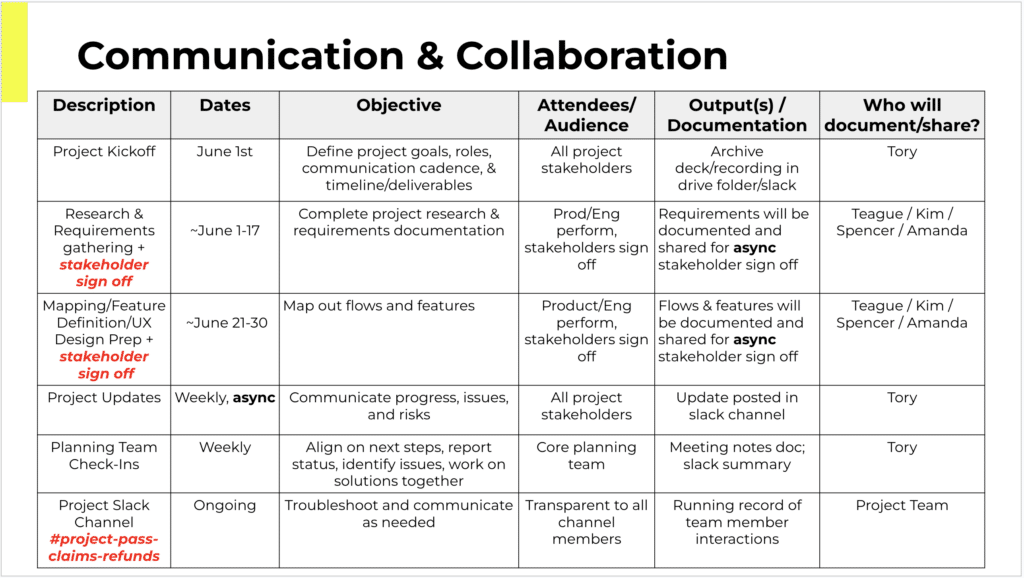
DISCOVERY / REQUIREMENTS & DATA REVIEW
In discovery it’s important to understand the confines and context of the project. To really understand what the feature being asked for is, and why it’s being asked for.
A large part of discovery was about gathering or reviewing the requirements. We would list out all the requirements and open questions we had as designers, then through discussions with stakeholders would narrow down on answers that became additional requirements.
For new features, we would often work through a process mapping exercise where we (together with the right stakeholders) would walk through the expected user experience of a new feature or flow at a high level, and discuss the business processes and logic that the expected user experience would need to support it. This was a great way to uncover further requirements and spark discussion around things that hadn’t been considered previously.
Another big part of discovery was to pull and analyze what metrics or data we had to inform a design. This could be the percentage of current users behaving a certain way, or how many total users had more than one type of insurance with Spot, etc..
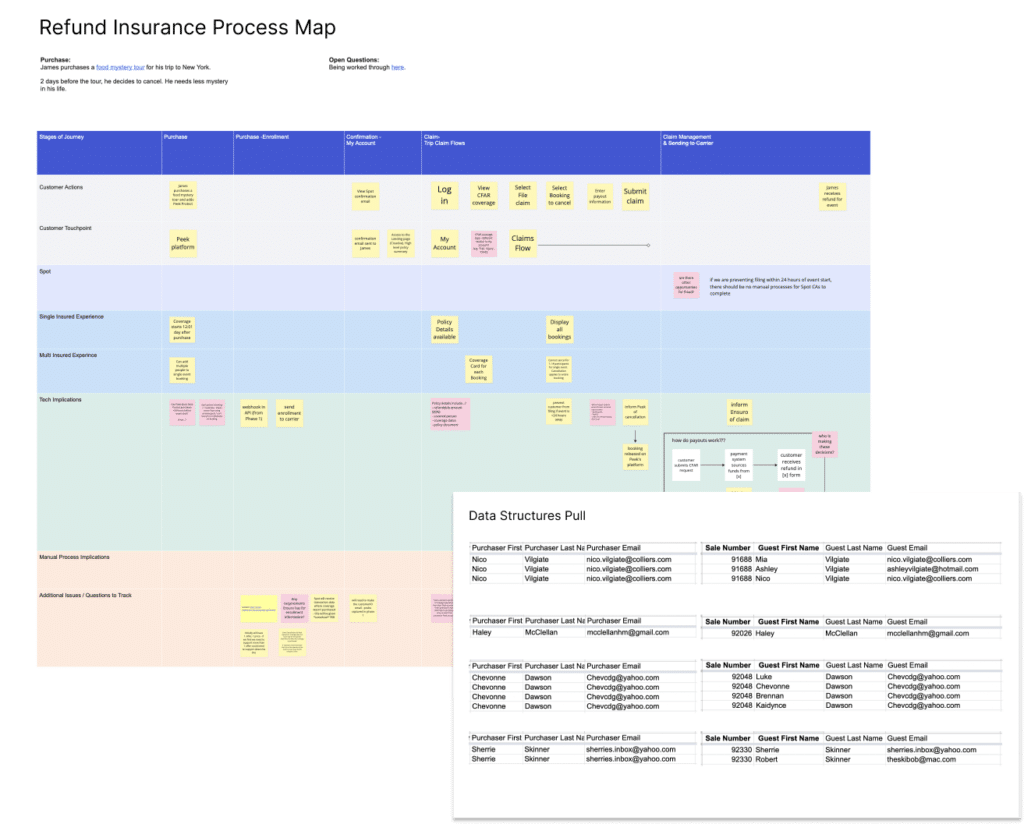
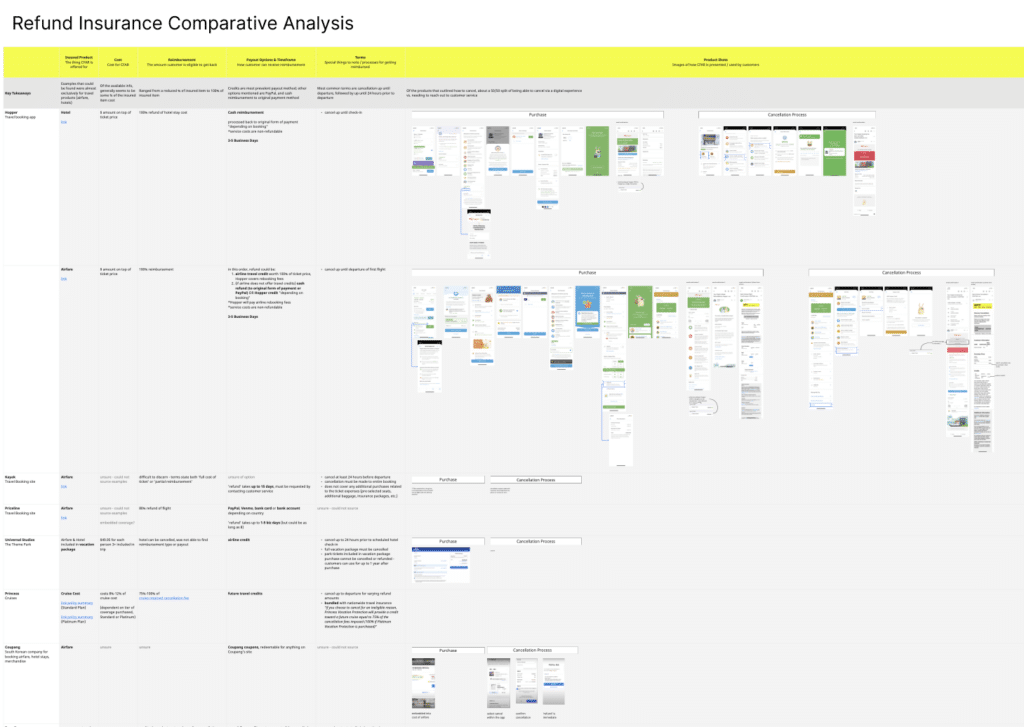
DESIGN & DESIGN ITERATION
(USER JOURNEYS & IA)
Once into design, we would often start with User Journey Mapping and IA models (sometimes using card sorting), in order to get the right steps in a flow defined and discuss with stakeholders the right model for we should consider structuring user actions. In insurance, there are ‘cases’, ‘claims’, ‘claimants’, ‘bills’, and ‘first notices of loss’ that all can relate to each other in different ways depending on how you want to structure them.
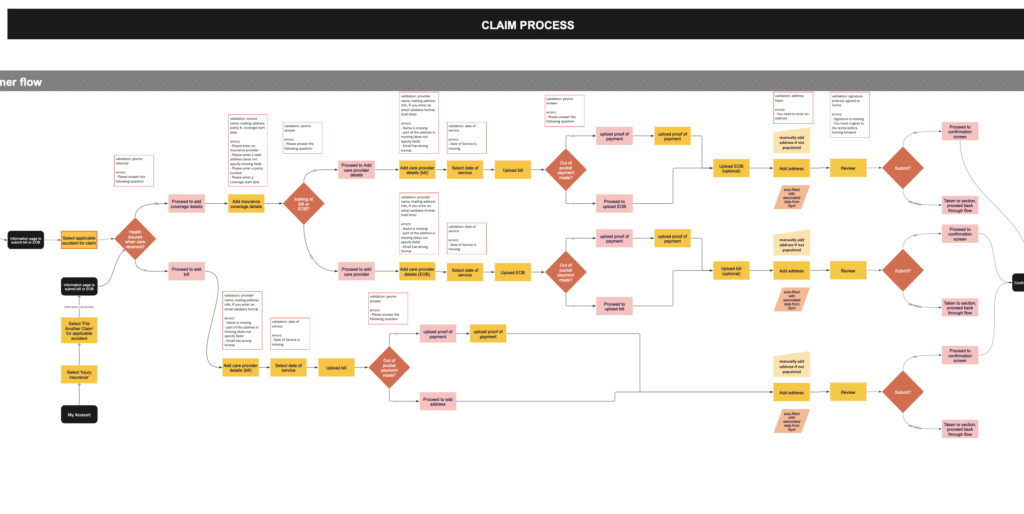

DESIGN & DESIGN ITERATION
(WIREFRAMES & SCREENS)
_____
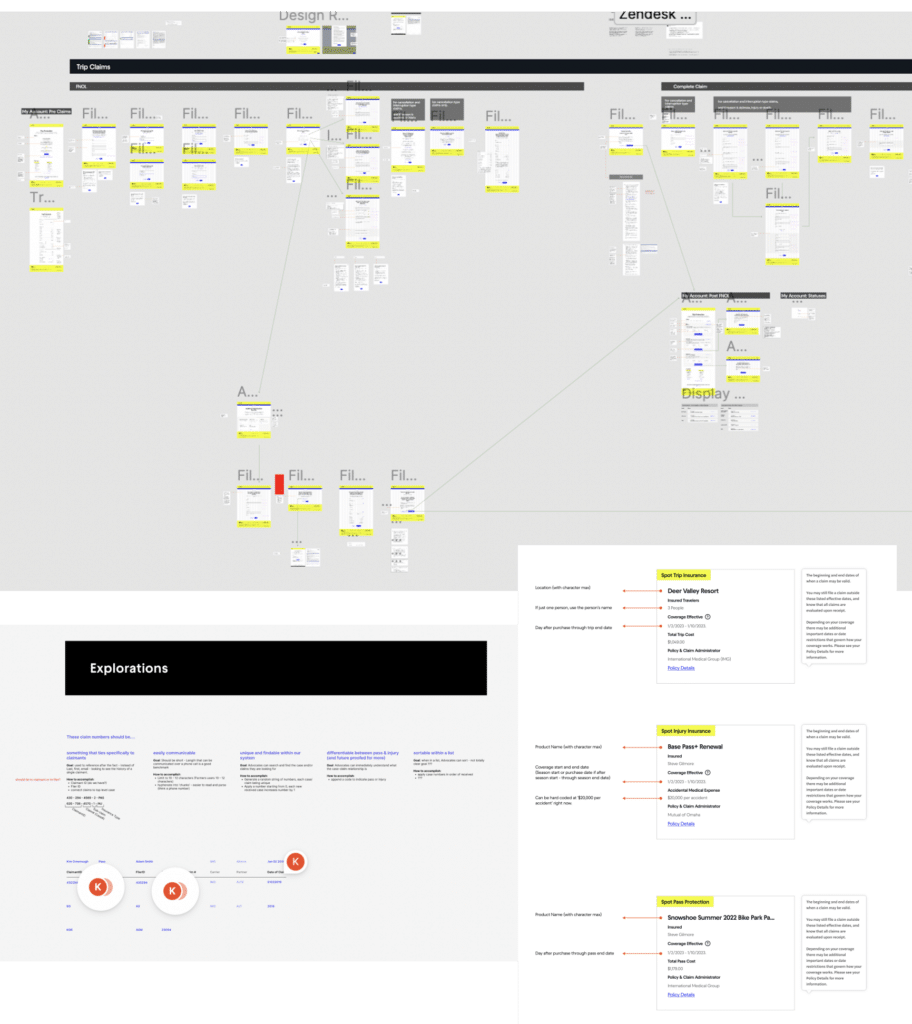
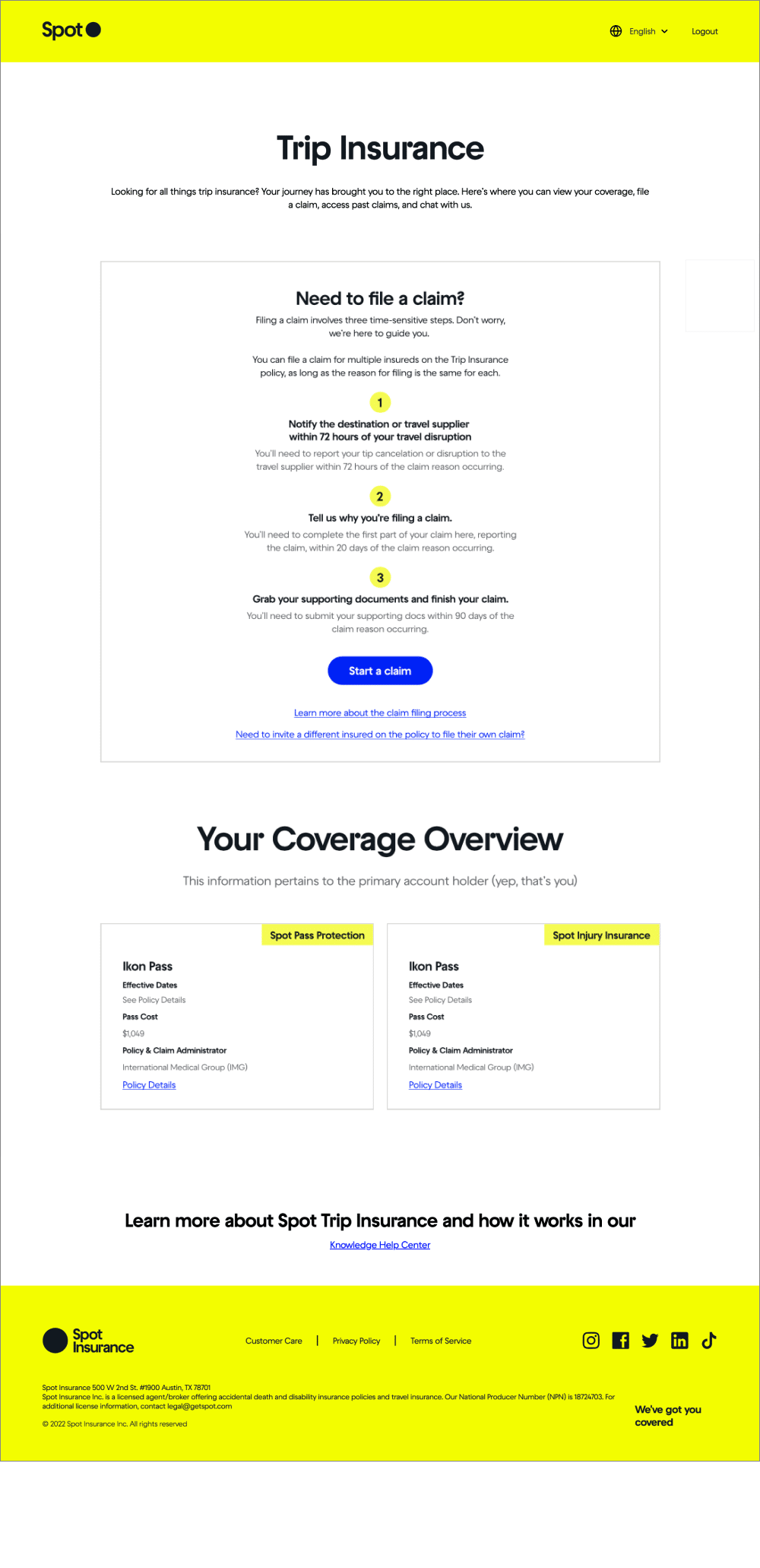
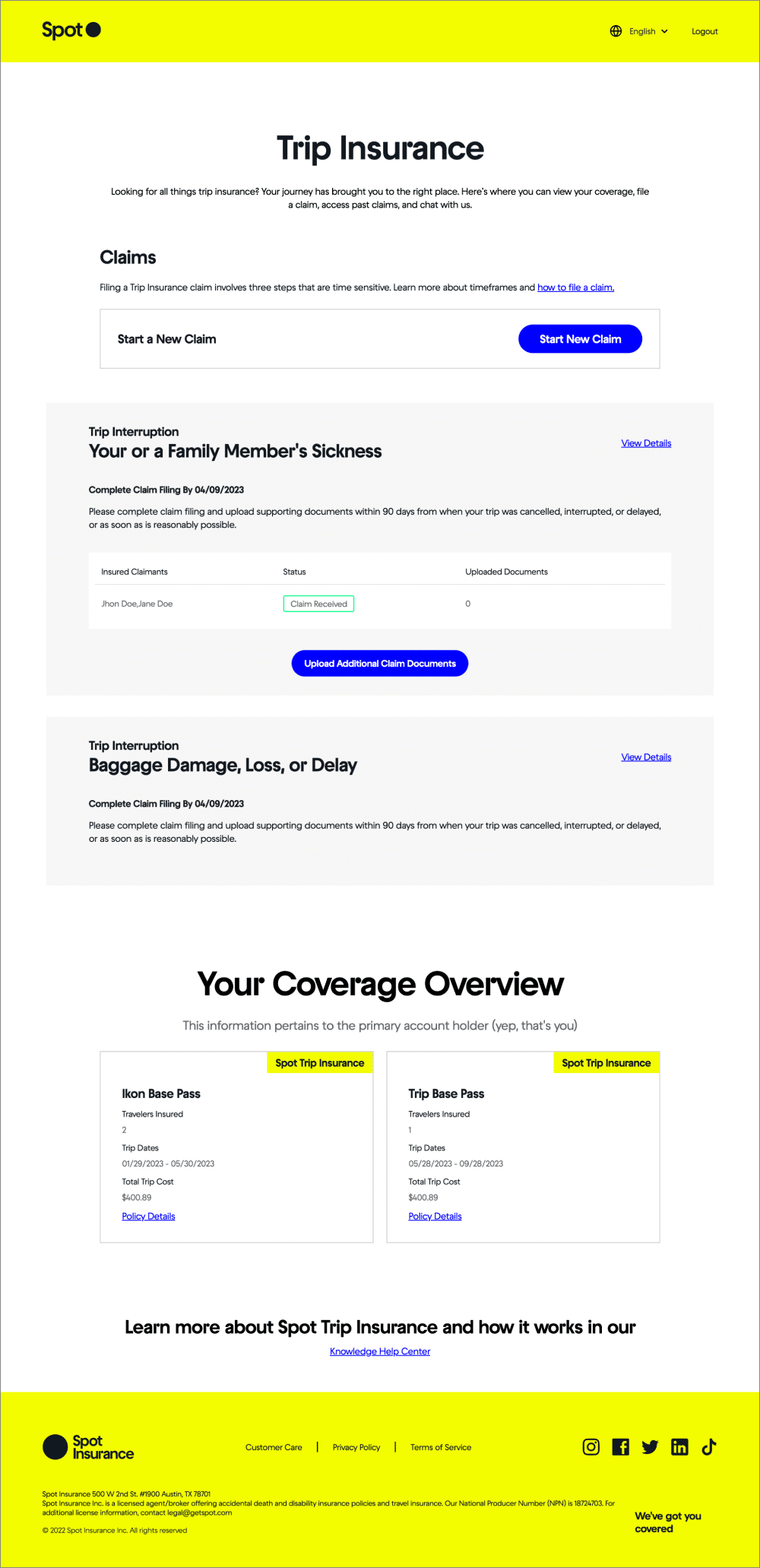
ENGINEERING COLLABORATION & SUPPORTING THE BUILD PROCESS
_____
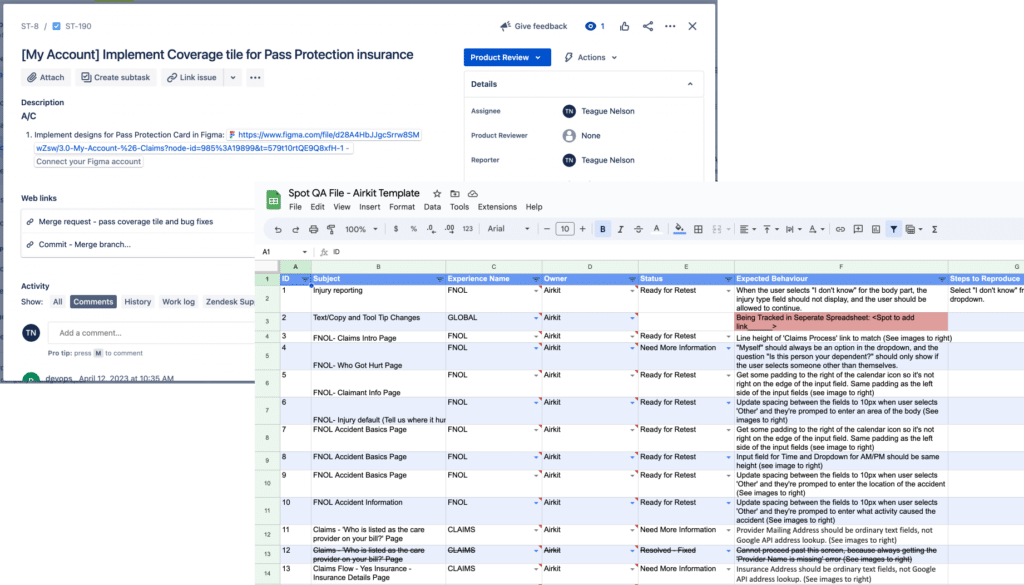
USABILITY TESTING & ANALYZING POST LAUNCH
_____
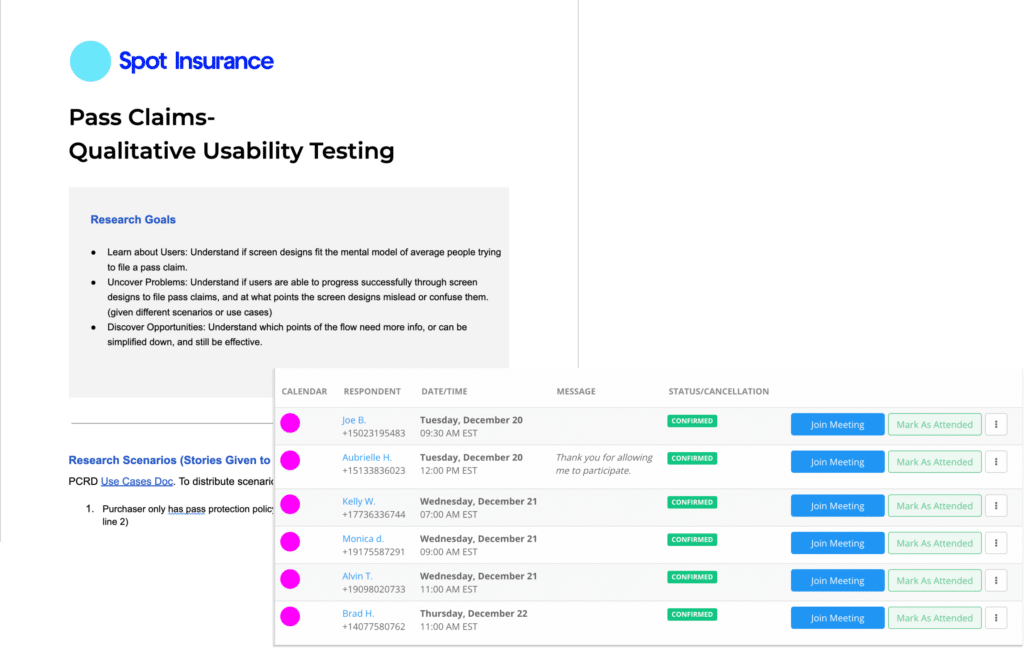
UX Team Management
OVERSEEING UX TEAM TIMELINES, WORKLOADS, AND OUTCOMES
As the most Senior Product & UX Designer for Spot, I would lead a daily standup with the other UX designers and we would discuss what we were working on, what needed to happen next, and set timelines to achieve our work.
We maintained a UX team Asana board, and used the board for our standup meetings.
This daily check in was a valuable time to review workloads, potential risks to our tasks and projects, and to tag in others when reviews or syncs were needed between designers.
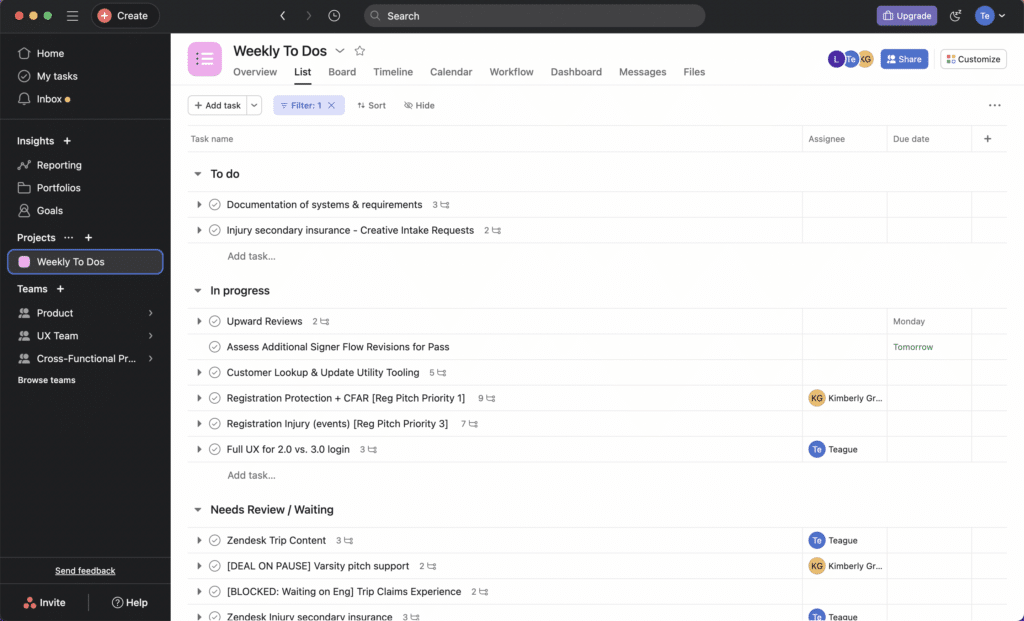
Ready for More?
View Another Project –
Client Dashboard & Enrollment
Designing the client carbon credit dashboard for Danish startup, Agreena. This allows farmers to estimate carbon credit potential.
Insurance Claims
Launching a new product at Spot Insurance. Considering the customer facing and management aspects.









